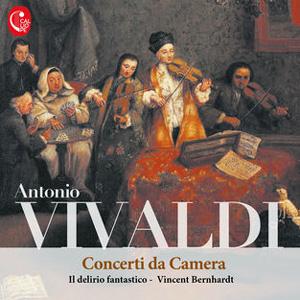The pieces are not strictly concerti da camera, in the early 18th-century usage of the term, meaning, as opposed to “concerti da chiesa,” or church music. They are chamber works that use the concerto form. Yet instead of one instrument being accompanied by an ensemble, the individual instruments move flexibly between roles: solo display, accompaniment, and secondary melody.
Twenty-one such works survive in Vivaldi’s catalog (two are of dubious authenticity), and all use a mixed variety of instruments, so much so that we must assume Vivaldi enjoyed exploring the wide variety of textures that the combination of form and instrumentation presented him with.
In a sense, they can be seen as concertos for flute and ensemble, as each uses a flute with an ensemble consisting of one or two violins, bassoon, continuo, and sometimes an oboe. Yet Vivaldi’s writing makes them more than this because of the way different instruments come to the fore. If a flute player played them as a concerto vehicle, he might be disappointed. It is the chamber ensemble nature of the pieces that gives them their charm.
We don’t know why or for whom Vivaldi wrote them. Perhaps he wrote them for his pupils at the Ospedale della Pietà in Venice, or perhaps for one of his patrons, such as Philippe de Hesse-Darmstadt for whom Vivaldi was choirmaster in Mantua from 1718 and with whom Vivaldi stayed in contact after leaving his service in 1720.
Or perhaps he wrote them for Saxon Kurprinz (the future Friedrich August II), who stayed in Venice during 1716 and 1717. August brought an ensemble with him, which included the violinist Johann Georg Pisendel for whom Vivaldi wrote music for the use of the orchestra at the court of Dresden. Or perhaps, like Handel and his Italian chamber duets, it was just that the form was one which Vivaldi liked writing and returned to at various periods during his working life.

Whatever the background, they are delightful works. Il Delirio Fantastico plays them with great charm and verve, really engaging us with the music and giving a strong sense of chamber interaction. Instruments move in and out of focus, and you feel the musicians’ delight in the changes of texture that this gives.
The works on this disc are generally in three movements: slow, fast, slow. But one is of a larger-scale format: the Concerto in G Minor RV 104, “La Notte.” It has five movements and includes extra detail in the movement titles, the fourth being “Il sonno. Largo.” You sense an underlying narrative in the work, and the piece would later be recast as a flute concerto for Vivaldi’s Opus 10.
These pieces deserve to be better known, and this delightful recording should win many friends. I certainly hope that Il Delirio Fantastico returns to Vivaldi’s “Concerti da Camera.”





